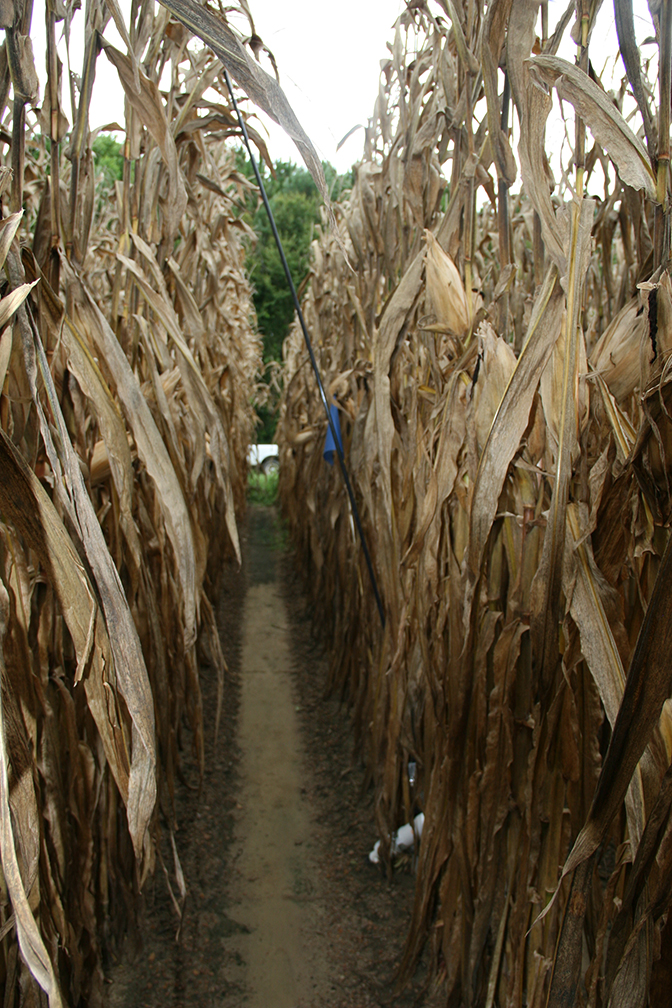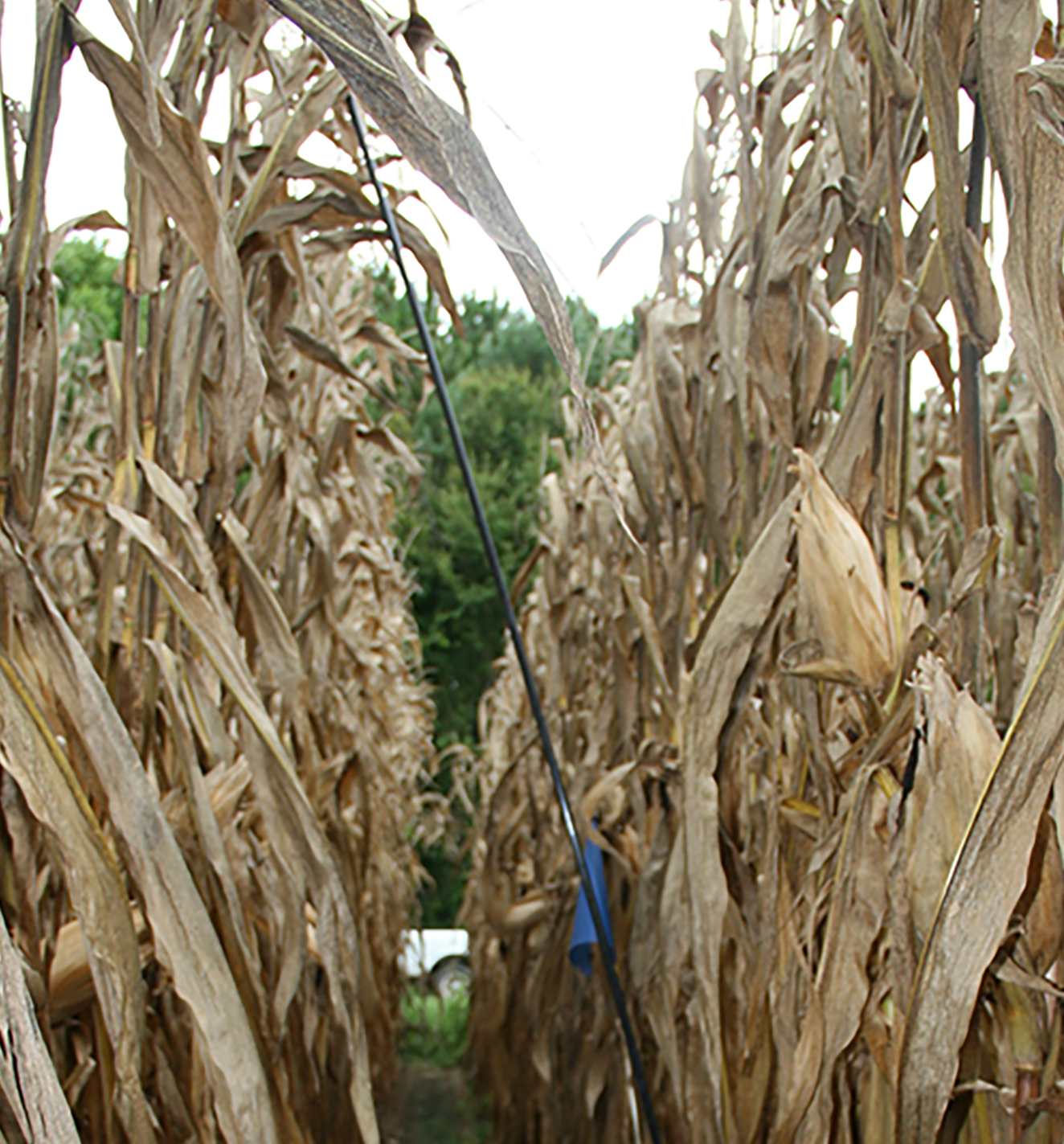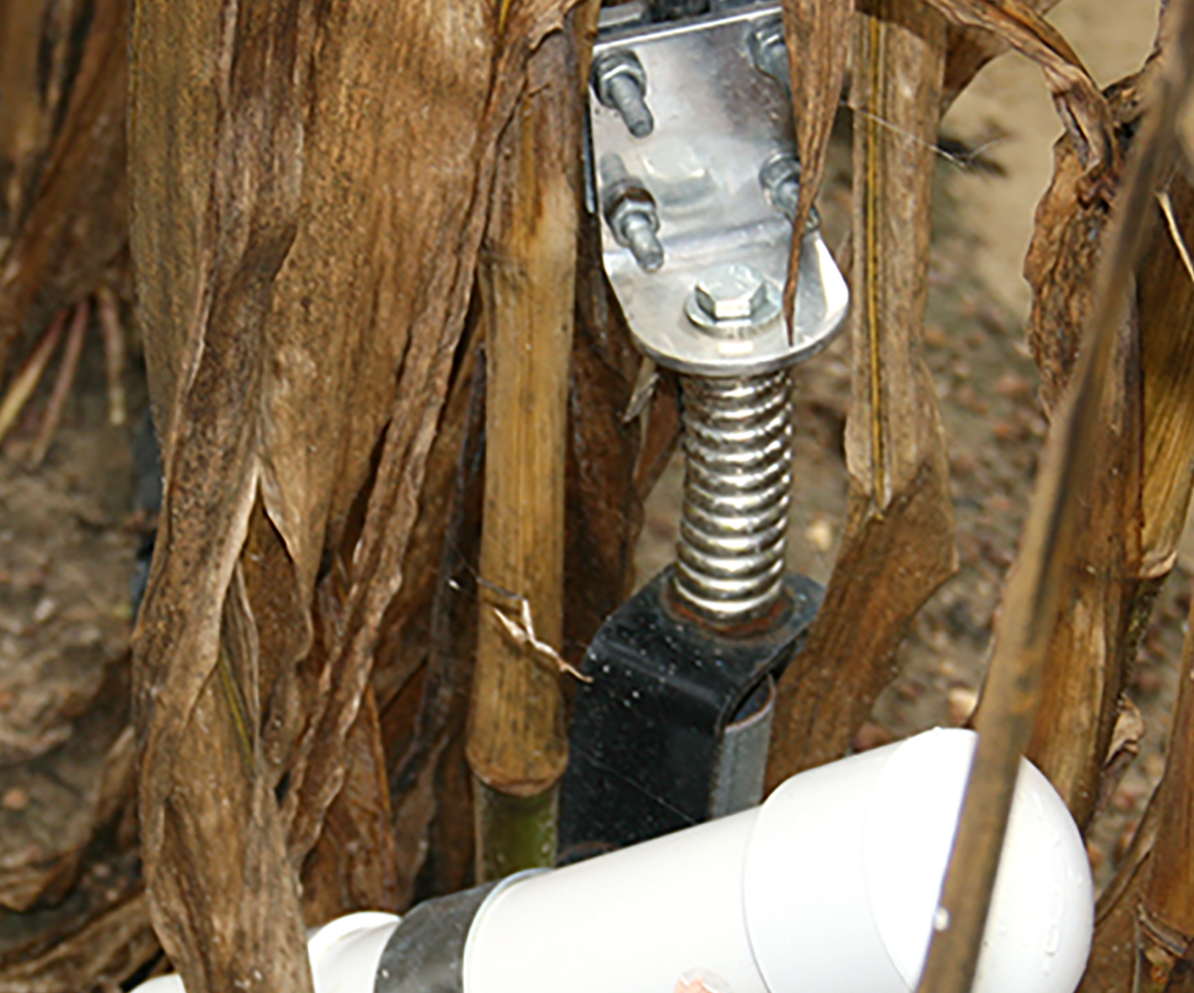Knowing the best place to install soil moisture sensors in fields, and how many, helps farmers optimize their water use, says University of Georgia Cooperative Extension precision agriculture and irrigation specialist Wes Porter.
“Basically, what soil moisture sensors are giving us is a point reference in that field, or a one-point measurement from a particular area in that field,” he said. “If we take a bad measurement somewhere in the field, that’s going to affect our entire area.”
Sensors are placed in the ground to provide farmers with accurate assessments of the soil quality. With the help of soil moisture sensors, questions of whether the soil is too dry, too saturated or whether certain areas are drier than others can be answered, Porter said.
Two different kinds of sensors are typically used for measuring soil moisture. The most commonly used type is called “capacitance,” and it indicates the amount of water available to use. The other type, tensiometric soil moisture sensors, determines the soil moisture that’s available and measures how much energy a plant must exert to extract moisture from the soil. Once this level gets too high, the plant can no longer extract moisture from the soil.
Porter, an advocate of sensors, says that to be effective agricultural tools, sensors have to be strategically placed throughout a field to provide accurate readings of the soil. If only one sensor will be used, he suggests picking an area that best represents the entire field. However, multiple sensors may be needed to get the best irrigation recommendations.
Making hasty or bad decisions, like installing a sensor beside the road because it’s easily accessible, can cause ramifications later.
“If we place the sensor in sandy soils, we might overirrigate the rest of the field. If we place the sensor in an area that has a slightly higher water-holding capacity and the rest of the field is mostly dominated by sand, it’s more than likely that the rest of the field will be underirrigated,” Porter said. “If we pick a lower area, in most cases, it’s going to be wetter. That means we’re not going to irrigate as often as we should. If we pick a higher area, it may be a little drier, so we would irrigate the field more than we normally would.”
Porter also stresses the importance of realizing that all fields are not created equal. Soils in the Southeast have extremely high levels of variability. A farmer may have multiple fields physically located near each other but with very different soil types.
“My advice is to invest a little bit more money and put a couple of sensors out in the field. If you’ve got a couple of sensors throughout the field, they will better represent the field. Then one can average those and better target what the entire field needs,” he said.
Porter and UGA precision agriculture specialist George Vellidis use another management strategy with soil moisture sensors: management zones. They divide the field into zones and place multiple sensors in each zone. The sensors provide accurate information about the soil moisture in their respective zones.
“When we create management zones, the typical rule of thumb in precision ag is a range of somewhere between three and four management zones,” Porter said. “If we get much lower than that, then we’re not showing much variability in the field. If we get higher than five management zones, it can be higher than what we can actually manage.”
The use of sensors in management zones allows farmers and researchers like Porter and Vellidis to make better irrigation decisions, he said.
For more information about irrigation practices or techniques, see striplingpark.org/agricultural-water-conservation.









